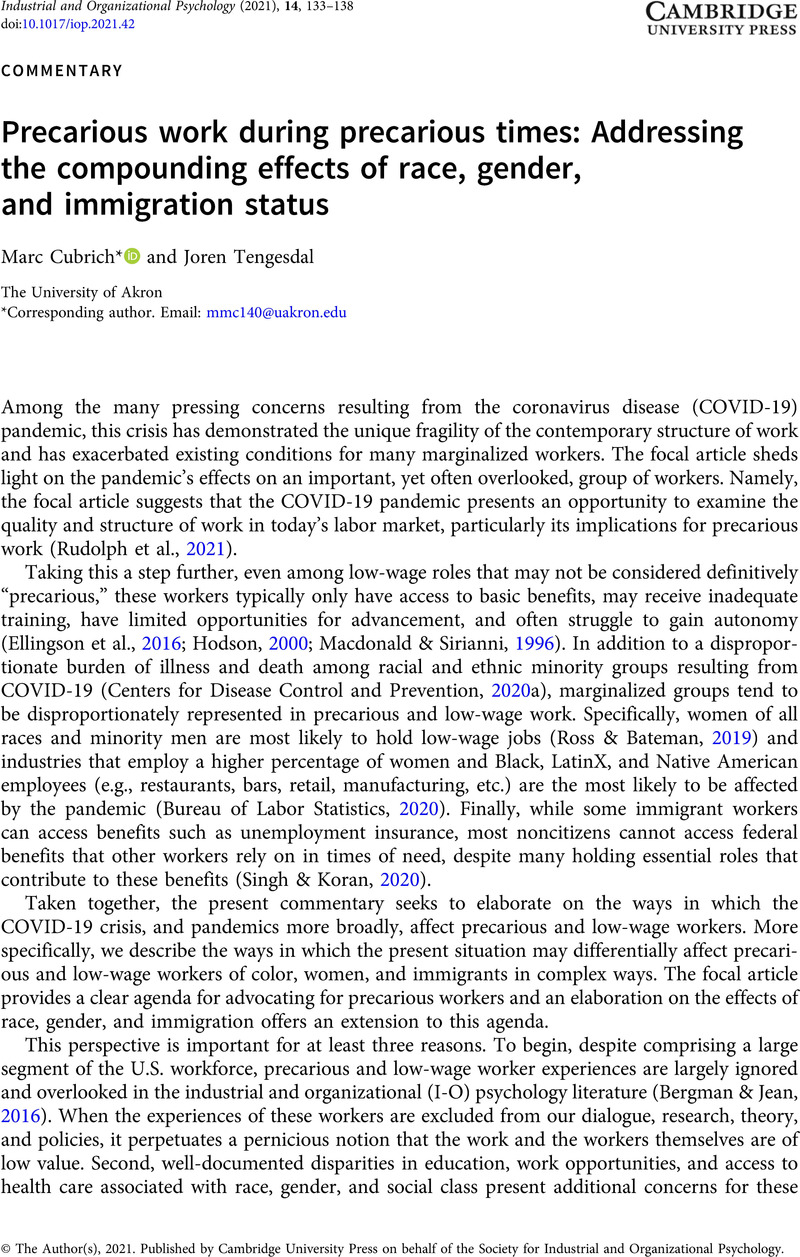Crossref Citations
This article has been cited by the following publications. This list is generated based on data provided by Crossref.
McWha-Hermann, Ishbel
Searle, Rosalind H.
and
Carr, Stuart C.
2021.
Striving for more: Work and Organizational Psychology (WOP) and living wages.
European Journal of Work and Organizational Psychology,
Vol. 30,
Issue. 6,
p.
771.
Williams, Myia S.
and
Patel, Vidhi H.
2022.
Mental Health and Wellness in Healthcare Workers.
p.
34.
Urbanaviciute, Ieva
Gander, Fabian
and
Massoudi, Koorosh
2023.
<p>Working Life During the Pandemic: Experienced Changes and their Implications for Occupational Well-being among Employees in Switzerland</p>.
Swiss Psychology Open,
Vol. 3,
Issue. 1,
p.
4.
Lin, Jing
and
Hao, Long
2023.
Bad Jobs on the Rise? Age, Period, and Cohort Effects on Low-Paid Work in Hong Kong, 1986–2016.
Social Indicators Research,
Vol. 170,
Issue. 3,
p.
1119.
Blustein, David L.
Lysova, Evgenia I.
and
Duffy, Ryan D.
2023.
Understanding Decent Work and Meaningful Work.
Annual Review of Organizational Psychology and Organizational Behavior,
Vol. 10,
Issue. 1,
p.
289.
Hwang, Jihee
and
Yoon, Seung Won
2023.
Workplace learning for the disadvantaged: Perspectives from adult education and human resource development.
New Directions for Adult and Continuing Education,
Vol. 2023,
Issue. 179,
p.
91.
Moughan, Caroline Jordan
and
Katz, Ian M.
2024.
Joint Effects: Where and How the Frequency of Cannabis Use Shapes the Relationship Between Employee Mental Health and Sickness Absenteeism.
Occupational Health Science,
Premji, Stephanie
Begum, Momtaz
Laila, Kishower
Jahangir, Sultana
and
Zvric, Adam
2024.
The Health and Safety Experiences of Precariously Employed Bangladeshi Immigrant Workers in Toronto During the COVID-19 Pandemic.
NEW SOLUTIONS: A Journal of Environmental and Occupational Health Policy,
Vol. 34,
Issue. 1,
p.
38.
Wurtz, Heather M.
Abularrage, Tara F.
McSorley, Anna-Michelle Marie
Rameau, Stephanie J.
and
Samari, Goleen
2024.
“We've Reimagined the Way We Serve”: Strategies of Community-Based Organizations in New York City to Support Immigrant Women During and After COVID-19.
Health Equity,
Vol. 8,
Issue. 1,
p.
96.
Harris, Lloyd C.
and
Ogbonna, Emmanuel
2024.
The same only different: precarious workers’ perceptions of their treatment in COVID-19 times.
Personnel Review,
Mejia, Cynthia
2024.
Consumers’ willingness to pay in socially sustainable restaurants: an application of the decent work scale.
British Food Journal,
Vol. 126,
Issue. 7,
p.
2841.





